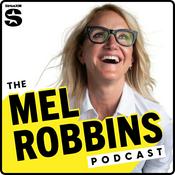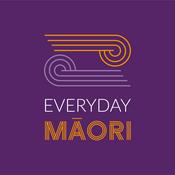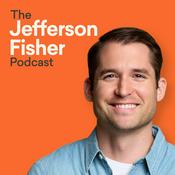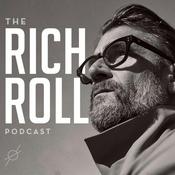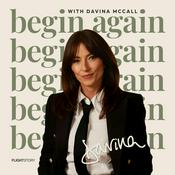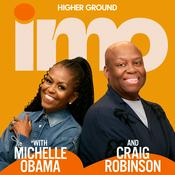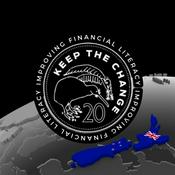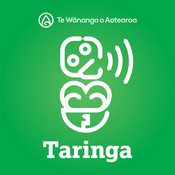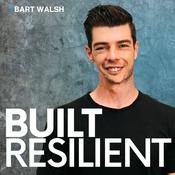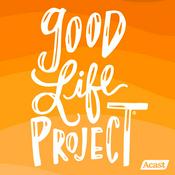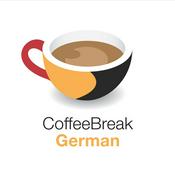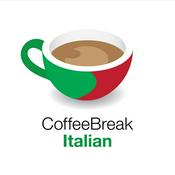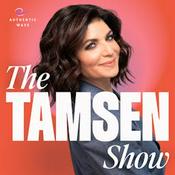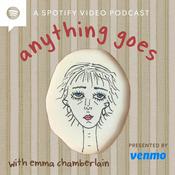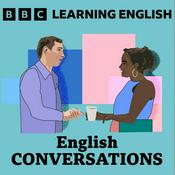21 episodes

E0 - Introduction to Binge PBL for Teachers
13/12/2024 | 1 mins.
Binge PBL for Teachers Are you looking to teach the way you’ve always wanted to? With passion and purpose? Are you tired of piecing together and fighting for student engagement every day? Are you wondering what Project Based Learning is all about? Are you ready to teach inspired? 20 Episodes - All less than 15 minutes...Bingeable! Resources at the end of every episode. 20 of the biggest Needs to Knows we have gotten over the last decade of being in classrooms with classroom teachers just like you. Magnify Learning - www.magnifypbl.com WhatIsPBL.com - free resources to get you started on your PBL journey!

E1 - Why PBL is Best for Kids
13/12/2024 | 9 mins.
Why PBL is Best for Kids? The episode focuses on why Project Based Learning (PBL) is beneficial for students. Host Ryan Steuer begins by sharing a story about his former student, Skyler. Skyler was a bright student in his early elementary years, but began to struggle around third grade. Skyler did not see the value of school and stopped completing his assignments, failing most of his classes. When Ryan introduced Project Based Learning and service learning in seventh and eighth grade, Skyler's attitude towards school changed completely. Through PBL, Skyler finally understood why he needed to learn certain concepts. For example, he was motivated to learn about Punnett squares when he learned how they could help parents understand genetic diseases. Skyler's PBL experience ignited a passion for photography. By high school, Skyler was a successful photographer with a large Instagram following, sponsorships from companies like Coleman and Valvoline, and a photo published in Time magazine. Skyler credits PBL with his success, saying it made him a lifelong learner. Ryan uses Skyler's story to illustrate how PBL can transform students' lives. He then explains three reasons why PBL is best for kids: PBL gives a context for learning. PBL goes beyond rote memorization and skill drills by providing students with real-world applications for their learning. PBL provides students with "handles" or contexts to help them understand the concepts they are learning. PBL is particularly beneficial for students in Title I schools who may lack the background knowledge and context to succeed in traditional learning environments. It is a myth that students need to learn the basics before they can engage in PBL. In fact, students need PBL to effectively learn the basics. PBL shows students how their work matters. PBL empowers students by giving them a voice and showing them that they can make a difference in their community. When students see the impact of their work, they become more engaged and motivated. PBL introduces students to slices of life that they might not know exist. PBL brings community partners into the classroom, exposing students to a variety of careers and life experiences. Meeting professionals from different fields helps students to envision themselves in those roles and expands their career aspirations. PBL provides students with opportunities they may not have otherwise had. Ryan encourages listeners to visit whatispbl.com for a free set of resources to get started with PBL. He concludes the episode by highlighting how PBL gives students hope and introduces them to a brand new future. Magnify Learning - www.magnifypbl.com

E2 - How to Love Teaching Again
13/12/2024 | 10 mins.
This episode focuses on why Project Based Learning (PBL) helps you teach like you've always wanted. The host, Ryan Steuer, begins by discussing his background as a former engineer at a Fortune 50 company and his transition to teaching. He realized that content knowledge is not the only thing needed for success, but skills such as teamwork, presentation skills, problem-solving, critical thinking, and idea generation are essential for career advancement. Ryan found that traditional teaching methods were not effective in helping his students develop these skills. After switching to PBL, he observed a significant positive change in his students. He provides an anecdote of a student group that was able to effectively communicate with a community partner for 45 minutes. Ryan presents three reasons why PBL is best for teachers: PBL allows teachers to teach in the way they have always wanted to teach. It allows them to realize their dreams of changing the lives of their learners. Ryan encourages teachers to resist the cynicism that surrounds the teaching profession and to believe that they can make a difference. PBL promotes growth in teachers. As teachers implement PBL and focus on employability skills, they start to embody these practices themselves, leading to personal and professional growth. Ryan highlights the importance of a growth mindset in PBL. PBL enhances relationships. Not only does PBL strengthen relationships with students, but it also fosters meaningful connections with community partners from diverse professions. This expands both the teacher's and the students' understanding of the world. PBL also transforms relationships with fellow teachers as they collaborate and share their experiences. Ryan encourages listeners to visit PBL schools and ask teachers how PBL has changed their lives. The episode concludes with a call to action for listeners to visit the website whypbl.com to learn more about why teachers love PBL. Resources Whypbl.com - Hear from classroom teachers and students why PBL is important for our classroom right now. Magnify Learning - www.magnifypbl.com

E3 - How to Grow as a PBL Teacher
13/12/2024 | 12 mins.
How to Grow As a PBL Teacher The main idea of this episode is how teachers can grow as PBL teachers. The host uses the example of Southport Elementary School, a Title 1 school in Indiana. Southport Elementary had the highest growth in the state on standardized tests. A common misconception is that high test scores are a result of "skill and drill," but research does not support this. PBL research shows that Title 1 students can excel with PBL because of the additional context and connections the projects provide. Southport Elementary increased student engagement, rigor, and context by using PBL. The episode emphasizes the importance of teachers taking on a growth mindset to help their students develop one as well. The host, Ryan Steuer, suggests three main actions for teachers to grow as PBL teachers: Action 1: Establish your values. Steuer recommends a protocol from James Clear, the author of Atomic Habits. This protocol has teachers select 10 core values, narrow it down to five, and then post those values somewhere as a reminder. Action 2: Gain comfort with the spectrum of control. Ryan points out the importance of student ownership but cautions against giving students complete control too soon. He presents a spectrum of control, from teachers having all the control to students having all the control. He then uses an analogy from Trevor MacKenzie, the author of Inquiry Mindset, of a swimming pool, where the shallow end represents teacher-driven instruction and the deep end is student-driven. Action 3: Change at different speeds. Ryan acknowledges that teachers will change at different rates and recommends thinking about changes in three categories: what to change immediately, what to change eventually, and what to change in the long term. Examples of immediate changes include seating arrangements. Examples of eventual changes include the length of direct instruction and developing group contracts. Examples of long-term changes include grading processes and giving up traditional grading practices, such as assigning zeros. Resources Join 4,000+ classroom teachers by signing up for a weekly email with three main resources (blog, podcast, and YouTube Video). Magnify Learning - www.magnifypbl.com

E4 - 3 Steps to Starting Your PBL Journey
13/12/2024 | 8 mins.
3 Steps to Starting Your PBL Journey Ryan uses a personal anecdote to introduce the idea that everyone taking on a new challenge starts by "crawling, walking, and then running." The main idea of the episode is that teachers should give themselves grace as they implement PBL, as there will be setbacks and failures along the way. There are three main stages to implementing PBL: Crawling: Teachers new to PBL should start slowly, by implementing protocols and strategies they may have seen at professional development or online. Walking: In this stage, teachers begin to use the resources and structures of PBL, such as the six steps of PBL, in their classrooms. Running: Teachers in this stage have successfully implemented PBL in their classrooms and are confident using protocols and strategies. Teachers should embrace failure as a part of the process and use it as an opportunity to grow. This can also help students to develop a growth mindset. Transparency is a key component of successful PBL implementation. Teachers should be open with their students about the challenges they are facing and work together to find solutions. The host encourages listeners who are ready to "run" with PBL to join the PBL Movement Online Community. The next episode in the series will focus on building a classroom culture that supports PBL. Resources Join hundreds of classroom teachers in the PBL Movement Online Community PBL Masterclass for Teachers Magnify Learning - www.magnifypbl.com
More Education podcasts
Trending Education podcasts
About Binge PBL for Teachers by Magnify Learning
Listen to Binge PBL for Teachers by Magnify Learning, The Mel Robbins Podcast and many other podcasts from around the world with the radio.net app
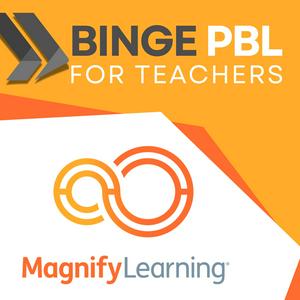
Get the free radio.net app
- Stations and podcasts to bookmark
- Stream via Wi-Fi or Bluetooth
- Supports Carplay & Android Auto
- Many other app features
Get the free radio.net app
- Stations and podcasts to bookmark
- Stream via Wi-Fi or Bluetooth
- Supports Carplay & Android Auto
- Many other app features


Binge PBL for Teachers by Magnify Learning
download the app,
start listening.
